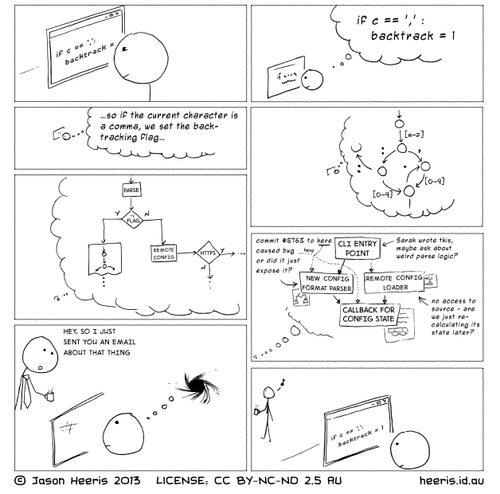04 3 / 2016
How to build a product from scratch
Though people try and make it sound extraordinary, but it is more about getting started in the first place and making a lot of decisions along the way. I have done it a few times in the past, and I will try and dispel the myths. When you start working on version 1.0 of a product, you spend a lot of time thinking about the product and architecture. It’s good if you spend significant time thinking about what your product is going to do, and how you are going to do it (technically). Ask a lot of questions. Additionally, it will be great if you put some thought into how this thing is going to scale into the near future, and try and think about any immediate contingencies that you may face once your product is unleashed onto the real world (out of the one that exists in your thoughts). It never hurts to stay prepared, but at the same time I will advise against shooting in the dark. That’s dangerous, and that’s too managerial for me to care about. I don’t know if there will be any computers/mobile devices five years from now (or the world will have moved on to the next big thing), so when someone asks if this product is going to work 5 years from now, all I can spare is a smile. Remember, this is the first iteration of your product, and it will continue to evolve as the world evolves, or it is going to be dead soon!
So once you are done with the thinking bit, it’s all about decisions - what language, what framework, what databases, what server, what caching layer, which host. At a more micro level - what server configuration, what defaults and which gems. For the bigger decisions, I usually try and stick with technologies I already know, for the simple reason that I know them better. That doesn’t mean that new technologies don’t find a place, and it could vary from project to project. Usually they can come a bit later in the cycle, when I am more clear about whether or not this technology can solve the given problem. So while building v1.0, each day involves a lot of decisions on your part, and you need to stick with them for a while. There could be mistakes, and the earlier you rectify those, the better. Fail early, fail fast!
Other than the decisions, you will need to write a lot of code. Be possessive about your code, feel offended/guilty if anything breaks. If you touch someone else’s code, it’s your responsibility that nothing breaks. Stay away from the blame game. Behave responsibly. If something is ugly and needs to be rewritten, rewrite it. At the end of the day, do look at the code that you have written, and see if something can be done better. If it can be, do it. Love what you do. F#@k process, use your good judgement. You are here to build. You cannot fake excitement, and if you are not excited about what you are building, then neither can Agile help you, nor the Waterfall model.
Unleash the dragon, and once it’s out in the open, get ready for round two. Iterate, iterate, iterate until you create something that people love! And once people start loving what you have built, you have some other problems to solve - scale.
Remember there are no silver bullets or turn key solutions for scaling your product. If you know people who think this way, stay away from them. Those are dangerous people. It involves effort at your end, and sheer determination to solve that problem. Don’t look at it as just another bug in the system. Pay attention early enough, read the warning signs, and get to work. Those are interesting problems to solve, and you are lucky enough to have hit them. Most of the people you know have never heard of them, and never will. Thanks to the open source community, and treasures of information available over the internet, the world is a better place, and you are not alone. You will figure it out, and unknown people, who you will never meet, will help you get there. That’s humanity!
As programmers we have the rare gift of being able to create things, and bringing ideas to life. You are a problem solver. That’s too much power which you ought to use now. In the words of Steve Jobs:
“Designing a product is keeping five thousand things in your brain and fitting them all together in new and different ways to get what you want. And every day you discover something new that is a new problem or a new opportunity to fit these things together a little differently.
And it’s that process that is the magic.”

Life is short! Don’t waste it on things that don’t matter. Feel free to throw your random ideas at me, in case you are looking for feedback/brainstorming, or just trying to solve a difficult problem. I firmly believe in good karma, and humanity :)
If you build products some other way, things which have worked for you, do let me know in the comments section.
15 10 / 2014
This is how Ruby programmers kill time!
It all started with looking at a text only loader for a Linux package on the terminal, and ended in a heart warming video about a rescue operation, written purely in ruby! No this isn’t a clickbait, but you need to execute (see) it to believe it ;)
Below are some cool Ruby one liners : “text only loader/processing/progress indicators” && “some FUN”
Share yours in the comment section! Do you have a better story to tell?
Posted by @amitsxena